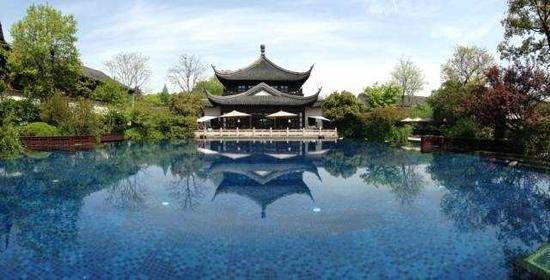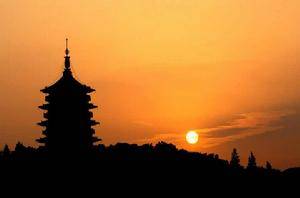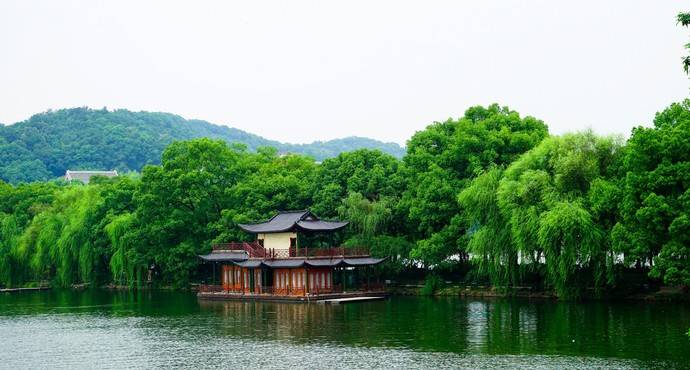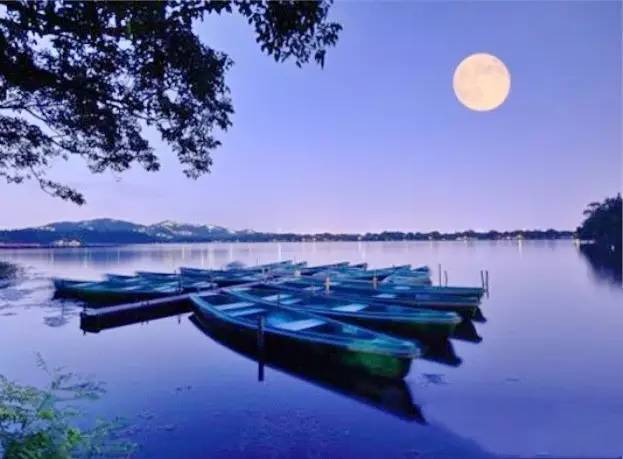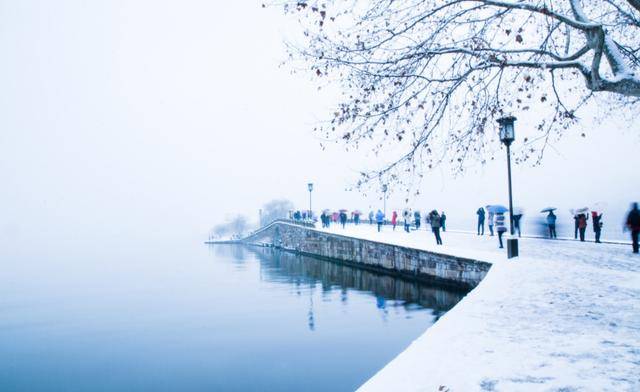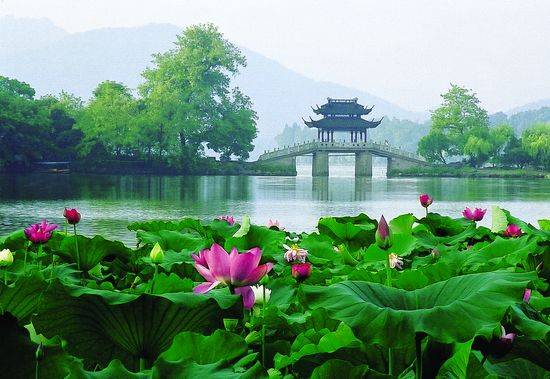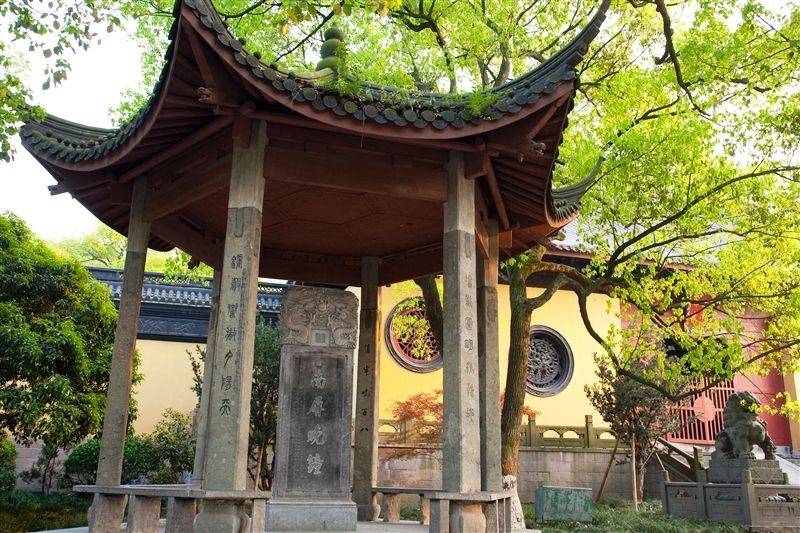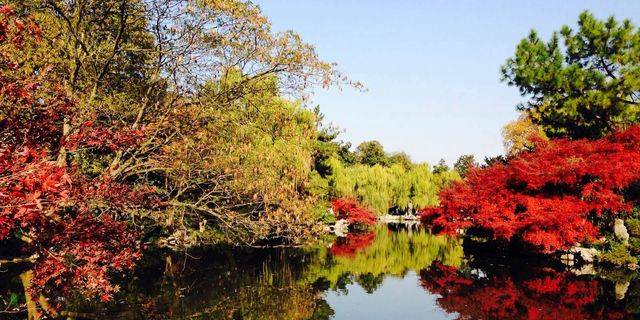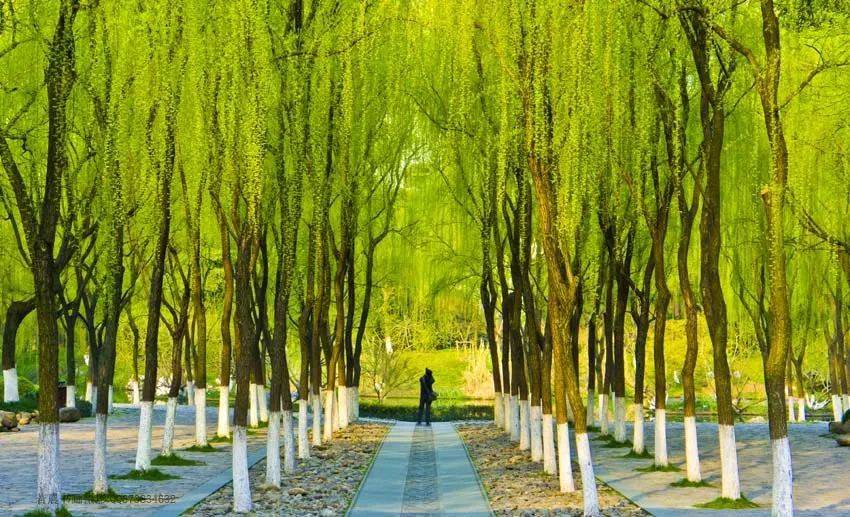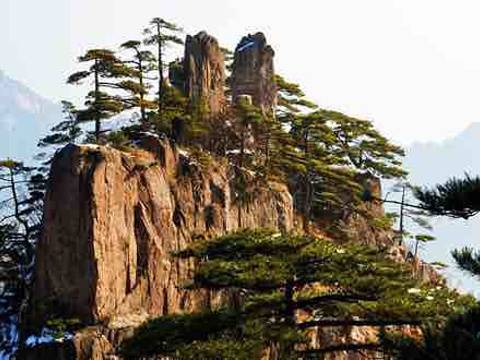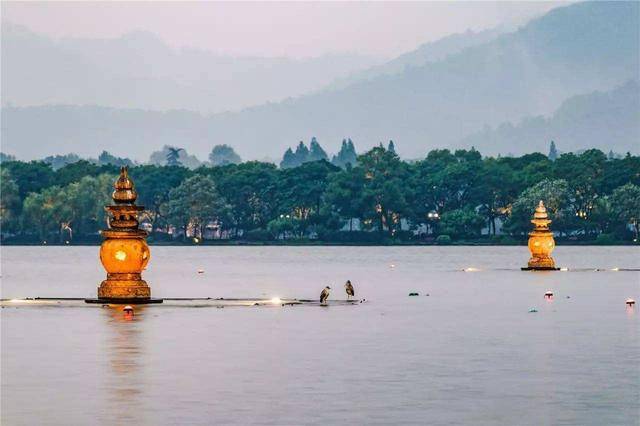The Leifeng Pagoda on Xizhao Mountain is the place where Fahai trapped Bai Suzhen in ancient legends. In the late Qing Dynasty and early Republic of China, due to the folk belief that the bricks and stones of Leifeng Pagoda had the power to 'ward off evil' and 'ensure male offspring,' people continuously stole and sold the bricks and stones. In 1924, the pagoda finally collapsed under the strain, prompting Lu Xun to write 'On the Collapse of Leifeng Pagoda.' To restore the scenic beauty of Leifeng Pagoda in the Sunset, a new Leifeng Pagoda was rebuilt on the original site in 2002, with the ruins of the old pagoda located on the B1 level of the new structure. Nowadays, climbing Leifeng Pagoda has become a must-do activity when visiting West Lake. The old custom of stealing bricks for 'warding off evil' and 'ensuring male offspring' has transformed into the new custom of tossing a one-yuan coin at the ruins of the old pagoda. On clear days, from the top of Leifeng Pagoda, one can overlook the rippling waters of West Lake, the elegant and dignified Wangzhuang, the newly emerging scenic spots on the southern line, and the lush, green three islands in the heart of the lake.
The Su Causeway runs through the north and south of West Lake. It was built by Su Dongpo during his tenure in Hangzhou and is also known as 'Su Gong Causeway'. Due to its enchanting spring scenery, it is called 'Dawn on the Su Causeway in Spring' and is the foremost of the Ten Scenes of West Lake. The causeway is nearly 3 kilometers long and features six stone bridges from south to north: Yingbo, Suolan, Wangshan, Yadi, Dongpu, and Kuahong. Yadi Bridge is ideal for viewing the panoramic scenery of West Lake. At the southern end of the bridge stands the Imperial Stele Pavilion, which houses an inscription of 'Dawn on the Su Causeway in Spring' by Emperor Kangxi. The scenic spots are concentrated at both ends of the causeway. The southern end has the Su Dongpo Memorial Hall, which is open for free visits, while the northern end features attractions such as Yue Fei Temple and Quyuan Garden.
Autumn Moon over the Calm Lake
Autumn Moon over the Calm Lake is located at the western end of the Bai Causeway. It is a narrow and long lakeside garden, known as the best place to enjoy the moon over West Lake. Backed by Solitary Hill and facing the outer lake of West Lake, the scenic area is open along the lake and is one of the Ten Scenes of West Lake. The area includes structures such as the Imperial Stele Pavilion, the water platform, the Four-sided Hall, the Octagonal Pavilion, and the Lake and Sky Pavilion. In the 38th year of Emperor Kangxi's reign, the original Dragon King Hall was converted into the Imperial Library, with a plaque inscribed with 'Autumn Moon over the Calm Lake' by Emperor Kangxi hanging in front of the building.
It is the meeting place of Xu Xian and Bai Suzhen in the legend 'The Legend of the White Snake', adding a lot of romantic color to this long bridge. When the first snow of winter falls, the sunny side of the bridge melts the ice and snow, but the shady side is still covered with remnant snow. From a high vantage point, the bridge appears to be broken but not broken, forming the famous 'Broken Bridge in Remnant Snow'. It can serve as the starting point for a tour of West Lake, from the Broken Bridge to the Bai Causeway to Solitary Hill, visiting various scenic spots around West Lake in sequence.
Quyuan Fenghe
One of the Ten Scenes of West Lake, located in the Fenghe Park where hundreds of varieties of lotus flowers are cultivated, showcasing an exceptionally charming allure in summer. During the Southern Song Dynasty, there was a distillery here that used stream water to make liquor. Every summer, the fragrance of the liquor and the lotus flowers would blend together, hence the name 'Quyuan Fenghe'. The lotus leaves are lush, the lotus flowers are enchanting, and various small bridges are built over the water. Walking on these bridges feels like walking among the lotuses.
This refers to the evening bell ringing at Jingci Temple on Nanping Hill. 'Nanping' refers to Nanping Hill behind Jingci Temple, and 'evening bell' refers to the large bronze bell within Jingci Temple. The bronze bell is 3 meters high and weighs over 10 tons, with more than 68,000 characters of the 'Lotus Sutra' inscribed on it. Around 4:00 PM every day, you can hear the sound of a large wooden mallet striking the bell, which is very deep and powerful. On New Year's Eve, many citizens and tourists gather inside and outside the bell tower of Jingci Temple to participate in the New Year bell-ringing event.
Huagang Fish Viewing is located on the southern side of West Lake and was once a private garden of a Southern Song Dynasty official. The entire garden is divided into five scenic areas: Red Fish Pond, Peony Garden, Flower Harbor, Large Lawn, and Dense Forest Area. The most famous attraction in the garden is the Red Fish Pond, where schools of red carp swim together. Visitors, both adults and children, often feed the fish with feed and breadcrumbs, enjoying the activity immensely. The park has three main entrances: the South Gate on Nanshan Road, the West Gate on Yang Gong Causeway, and the North Gate leading to Su Causeway.
Liulang Wenying is one of the Ten Scenes of West Lake, located on the southeast shore of West Lake, at Qingbo Gate. It is a large park and a great place for people to relax. During the Southern Song Dynasty, it was the imperial garden called Jujing Garden. In the Qing Dynasty, the old scene of Liulang Wenying was restored. The garden layout is open, fresh, elegant, and simple. The willow clusters are complemented by purple nanmu, cedar, magnolia, peach, crabapple, rose, and other exotic trees and famous flowers. It is an excellent place to appreciate the beauty of West Lake in both heavy and light makeup. The tranquil environment is also very popular among the elderly, and tourists often rest here.
Twin Peaks Piercing the Clouds is one of the Ten Scenes of West Lake. The so-called twin peaks refer to the South Peak and North Peak, which are branches of the Tianmu Mountain range. They split at West Lake into the South Mountain and North Mountain. On fine days in spring and autumn, the peaks are shrouded in green mist and white fog, with the tips of the towers piercing the clouds, appearing and disappearing intermittently, creating a fairyland-like scene from a distance.
Also known as Xiaoyingzhou, it is the largest island among the three islands of West Lake and the only one that can be visited. It is praised as the first scenic spot of West Lake. The outline resembles the character '田', with a circular outer area representing Jiangnan gardens, and the interior divided into four small lakes by cross-shaped islands and bridges, full of poetic charm. The entire island features a mix of sparse and dense flora, mainly consisting of willows, lotus flowers, red maples, and hibiscus, representing the art of Jiangnan water courtyard. The back of the one yuan renminbi note depicts the grand scene of San Tan Yin Yue, highlighting its extremely important symbolic role in our country's scenic spots.
